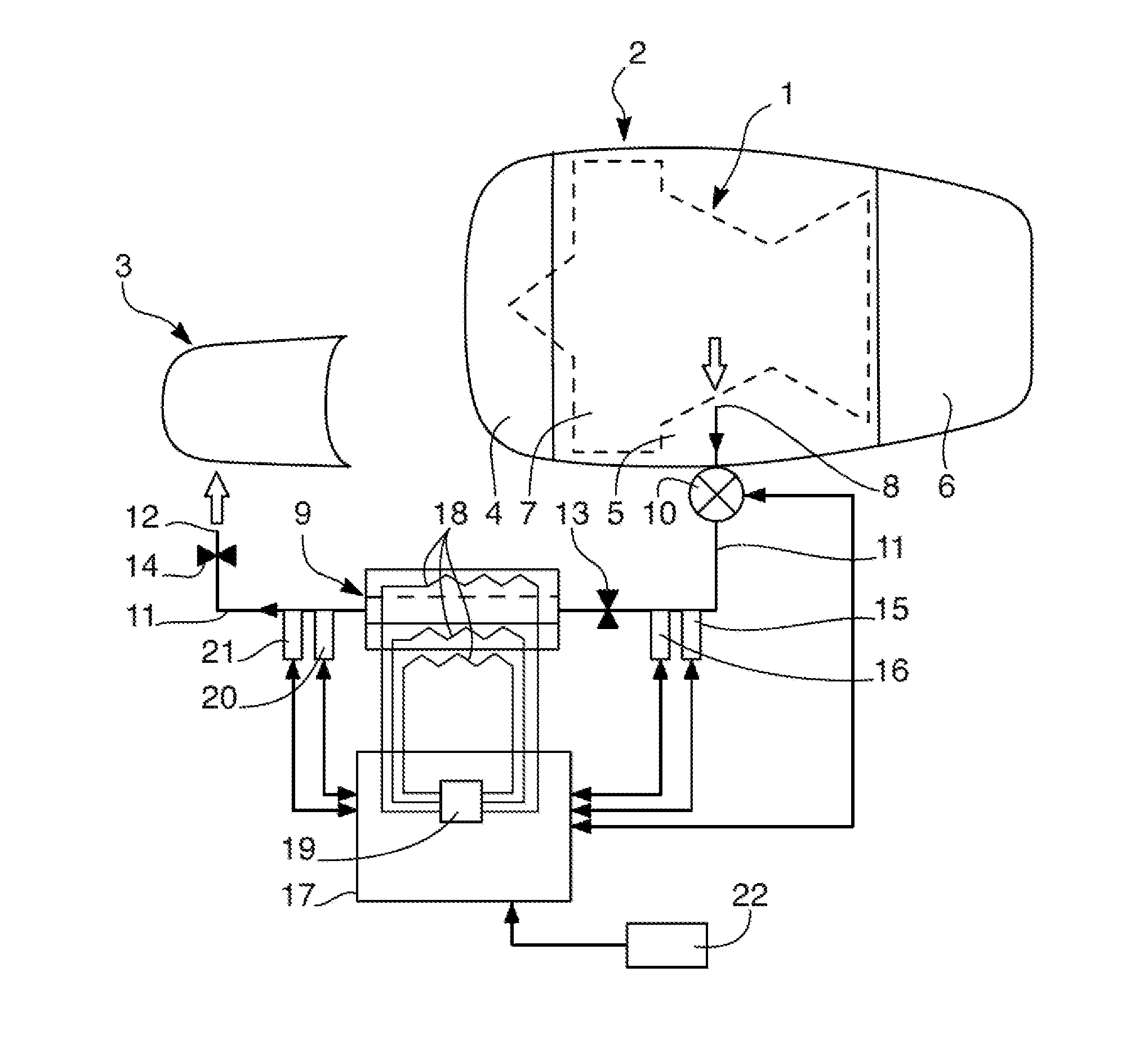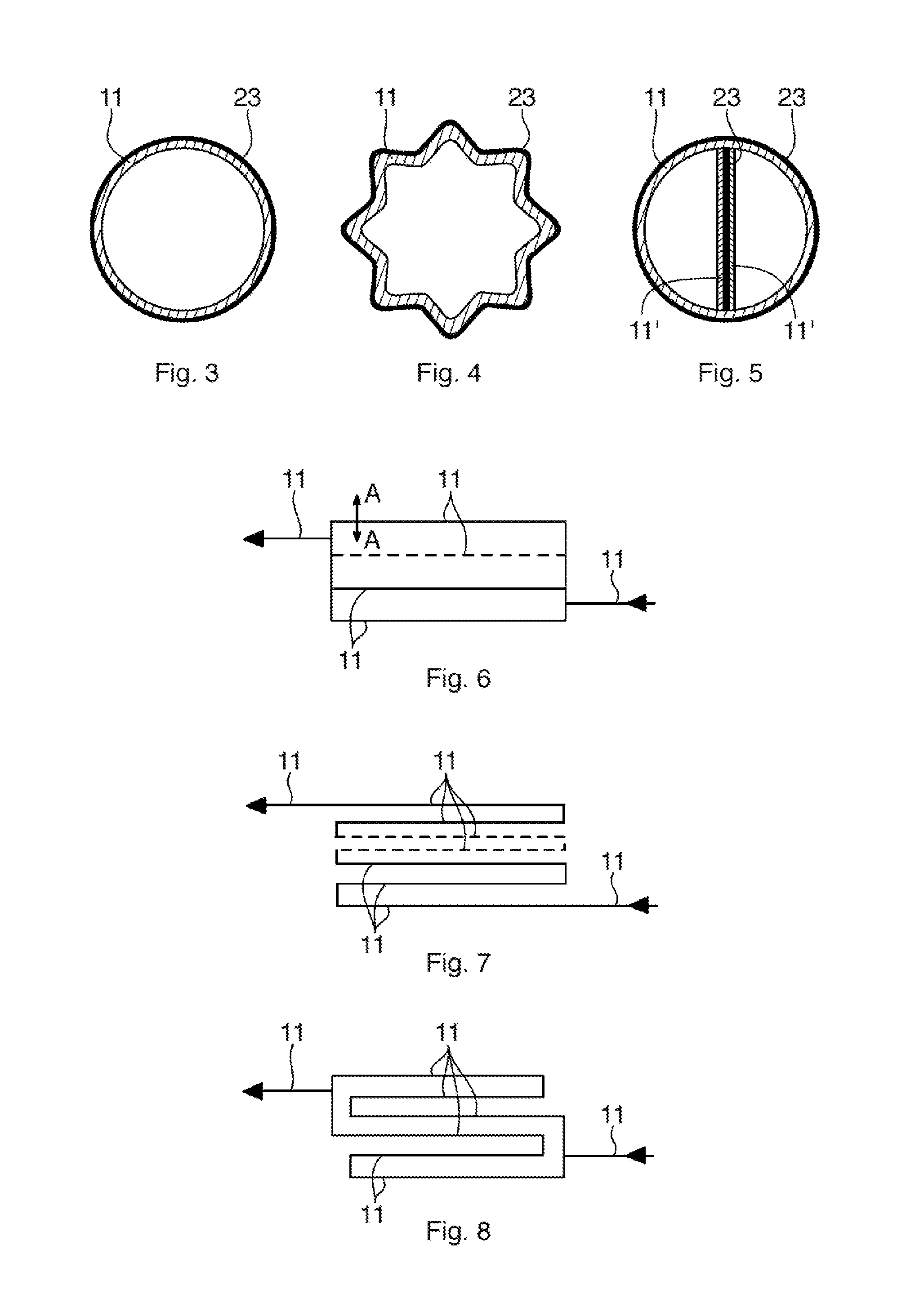Method And Device For Using Hot Air To De-Ice The Leading Edges Of A Jet Aircraft
a jet aircraft and leading edge technology, applied in aircraft components, de-icing equipment, transportation and packaging, etc., can solve the problems of affecting the aerodynamics of the wings, affecting the airflow of the fan, and being particularly exposed to the formation of ice, so as to improve the flexibility of the known devices and reduce the temperature range of hot air.
- Summary
- Abstract
- Description
- Claims
- Application Information
AI Technical Summary
Benefits of technology
Problems solved by technology
Method used
Image
Examples
Embodiment Construction
[0049]In the figures, elements which are identical or equivalent will bear the same reference signs.
[0050]FIG. 1 schematically shows the hot air de-icing device according to an embodiment of the invention.
[0051]The hot air bled from a jet engine 1 is symbolized by an arrow in FIG. 1. The jet engine 1 is housed in a nacelle 2 borne by the fuselage of an aircraft (not illustrated in the figures).
[0052]FIG. 1 shows just one leading edge, namely a lip 3 of an air inlet cowl 4 followed by a central cowl 5 surrounding the engine 1, and finally a jet pipe cowl 6.
[0053]The hot air is bled under pressure from a stage (not depicted) of a compressor 7 positioned upstream of the engine 1. The hot air is bled by an inlet 8 of a hot air circulation circuit 9 passing through a flow regulating valve 10 which also acts as an isolation valve so that the flow can be switched on and off according to the need for a supply of hot air.
[0054]The pressurized hot air passes along the ducts 11 of the circulat...
PUM
 Login to View More
Login to View More Abstract
Description
Claims
Application Information
 Login to View More
Login to View More - R&D
- Intellectual Property
- Life Sciences
- Materials
- Tech Scout
- Unparalleled Data Quality
- Higher Quality Content
- 60% Fewer Hallucinations
Browse by: Latest US Patents, China's latest patents, Technical Efficacy Thesaurus, Application Domain, Technology Topic, Popular Technical Reports.
© 2025 PatSnap. All rights reserved.Legal|Privacy policy|Modern Slavery Act Transparency Statement|Sitemap|About US| Contact US: help@patsnap.com



